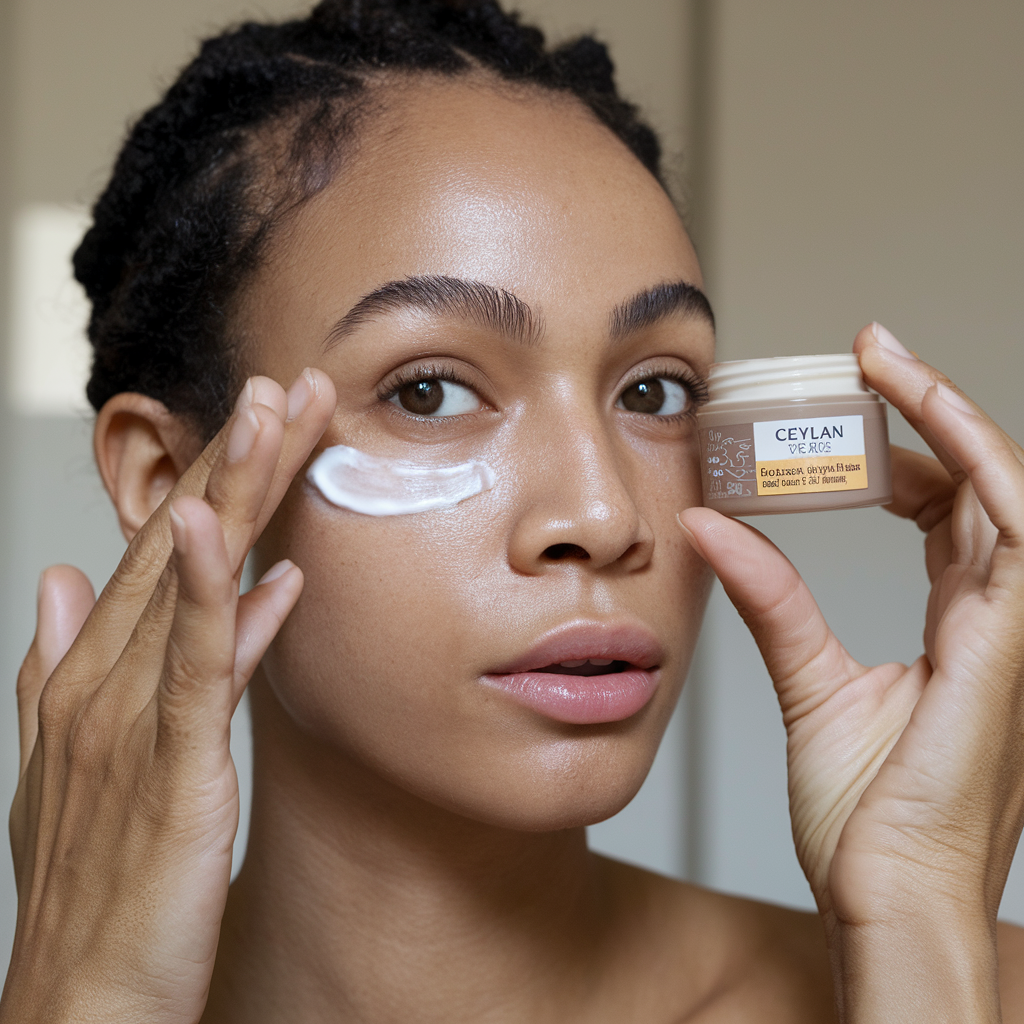Uncategorized
A Deep Dive into the Enigma of “Skşi”

Introduction
The term “skşi” is a fascinating linguistic puzzle, shrouded in mystery and ambiguity. It’s a word that has captured the attention of linguists, historians, and cultural enthusiasts alike, yet its precise meaning and origins remain elusive. In this article, we will embark on a journey to explore the depths of “skşi,” delving into its potential meanings, historical context, and the cultural significance it may hold.
The Linguistic Puzzle of “Skşi”
“Skşi” is a term that appears to be a loanword, likely originating from an ancient language or dialect. Its phonetic similarity to words found in various Indo-European languages suggests a potential connection to these linguistic families. However, the exact language from which “skşi” was borrowed remains uncertain.
One hypothesis is that “skşi” may be related to the Sanskrit word “akṣi,” which means “eye.” This connection is intriguing, as the eye is often seen as a symbol of perception, knowledge, and spiritual awareness. However, without further linguistic evidence, it is difficult to definitively confirm this relationship.
Historical Context and Potential Meanings
To understand the potential meanings of “skşi,” it is essential to consider the historical context in which it appears. While there is limited historical documentation directly mentioning “skşi,” we can infer its significance based on the cultural and religious traditions of the regions where it is found.
In some cultures, “skşi” may have been associated with spiritual practices or religious beliefs. It could have been used to describe a sacred object, a divine entity, or a state of enlightenment. Alternatively, it might have referred to a natural phenomenon or a celestial body.
Cultural Significance and Interpretations
The cultural significance of “skşi” is multifaceted and often depends on the specific context in which it is used. In certain traditions, it may have been seen as a symbol of power, wisdom, or protection. It could have been invoked in rituals, ceremonies, or prayers to invoke blessings or ward off evil.
Moreover, “skşi” may have held personal significance for individuals. It could have been used as a personal name, a talisman, or a spiritual mantra. The meaning and interpretation of “skşi” would have varied greatly depending on the individual’s beliefs, experiences, and cultural background.
Expanding the Enigma: Beyond “Skşi”
The Broader Context of “Skşi”
To gain a deeper understanding of “skşi,” it is essential to examine its broader context within the cultural and linguistic landscape. This includes exploring related terms, linguistic patterns, and historical events that may have influenced its usage and meaning.
Related Terms and Linguistic Patterns
One approach to understanding “skşi” is to examine related terms and linguistic patterns. Are there other words or phrases that are similar in sound or meaning? Are there any recurring linguistic patterns or structures that suggest a specific origin or cultural context?
By analyzing these linguistic elements, we can gain valuable insights into the potential meanings and origins of “skşi.” For example, if there are other words in the same language or dialect that share similar phonetic features or semantic meanings, it may suggest a common linguistic source or cultural influence.
Historical Events and Cultural Influences
Historical events and cultural influences can also provide valuable context for understanding “skşi.” Were there any significant historical events or cultural shifts that may have impacted the usage or meaning of this term? Were there any external influences, such as trade, migration, or conquest, that could have introduced “skşi” or shaped its development?
By examining the historical context, we can better understand the potential cultural and linguistic factors that may have contributed to the emergence and evolution of “skşi.”
The Future of “Skşi” Research
Despite the challenges and limitations of current research, the study of “skşi” remains a fascinating and rewarding endeavor. As new linguistic and historical discoveries are made, we may be able to uncover additional clues about its origins and meaning.
Future research may involve:
- Comparative linguistics: Comparing “skşi” with similar terms in other languages to identify potential linguistic connections.
- Historical analysis: Examining historical documents and artifacts to find references to “skşi” and its associated cultural practices.
- Cultural studies: Exploring the cultural and religious contexts in which “skşi” appears to understand its significance within specific traditions.
- Digital humanities: Utilizing digital tools and techniques to analyze large datasets of linguistic and historical information.
By combining these approaches, researchers may be able to shed new light on the enigmatic term “skşi” and its place within the rich tapestry of human language and culture.
Conclusion
The term “skşi” remains a fascinating linguistic enigma, shrouded in mystery and ambiguity. While its precise meaning and origins may be difficult to ascertain, the exploration of its potential meanings and cultural significance offers valuable insights into the rich tapestry of human language and history.
As scholars continue to delve into the depths of “skşi,” we may one day uncover the secrets of this intriguing word. Until then, “skşi” will continue to captivate our imaginations and inspire further exploration into the mysteries of language and culture.
Uncategorized
Stunning debut! Eco-friendly bamboo plywood is the new choice for superior quality and durability in flooring materials!

We are committed to finding the best materials for our valued customers, and we have a wide range of products with a variety of colors and textures. One of our favorites is our unique bamboo plywood, which is increasingly sought after by homeowners, woodworkers, and builders across the United States as an ideal green alternative to natural hardwood plywood. Bamboo plywood is used in a variety of applications, including wall paneling, furniture manufacturing, cabinet assembly, toy making, countertop decorating, and even meat slicing.
It’s no coincidence that bamboo plywood is now recognized as one of the safest, most durable and sustainable building materials on the market. Whether you’re a discerning homeowner looking for the perfect countertop or a builder looking for a new, versatile alternative to natural wood, this versatile material will meet your needs. Enjoy our selection of natural, carbonized, and tiger/zebra-finish bamboo plywood, available in a wide range of thicknesses, from 1/4“ to 1-1/4” panels.
What is bamboo plywood?
Bamboo, an extremely fast-growing herb that thrives anywhere, even in poor soil conditions. Slender rectangular strips of bamboo are arranged according to specific design rules and then laminated (vertical edge grain or horizontal plane grain). After the weaving process, the bamboo is compressed (the strands are woven) under extremely high temperature and pressure conditions, resulting in a smooth, flat unfinished milled board/panel.
There are many different types of bamboo plywood
Thousands of different bamboo species exist worldwide, however not all of them are suitable for use as a building material such as bamboo plywood. The most common source of bamboo is the fast-growing Moso bamboo. Depending on the manufacturing process, natural and carbonized plywood can be made with vertical or horizontal grain. Bamboo color variations are mainly due to the heat treatment process – when first harvested and prepared, the material has a yellowish hue; however, when heated at high temperatures, it develops varying degrees of darker hues. For example, the tiger-like color, also known as zebra and Neapolitan, is the result of blending natural bamboo with carbonized bamboo to create the distinctive effect of wire-woven bamboo. Bamboo plywood presents colorful styles based on a combination of three main elements:
Grain. This refers to the visual effect of the plywood surface. The most common grain textures include vertical, horizontal, and chained. Vertical and horizontal grains are most widely used in modern design, while strand-woven grains have a more traditional wood flavor.
Colors. Bamboo plywood is available in a wide variety of colors and even supports custom staining. The three dominant colors are Natural (golden yellow), Carbonized (tan/honey), and Tiger (neopolitan/zebra/marble), which is a subtle combination of natural and carbonized colors.
Thickness. Bamboo plywood ranges in thickness from as thin as 1/4-inch up to as thick as 1-1/2-inch. 1-1/2-inch thick panels are widely used in areas such as countertop fabrication as well as butcher block furniture manufacturing.
Bamboo products are closely related to the concept of sustainable development.
One of the key advantages of choosing bamboo as a building material is its high degree of sustainability. This fast-growing herb is self-renewing, as its root structure can be regenerated from existing resources even after it has been cut down. This is more environmentally friendly than other farming methods, and harvesting by hand is far superior to mechanical equipment that relies on fossil fuel consumption. Since the factories are often located close to the plantations, transporting the bamboo requires relatively little energy. By utilizing a variety of manufacturing methods, bamboo plywood can be easily produced in different grades and thicknesses.
In the U.S., more and more builders and retailers are looking for more sustainable business models and more environmentally friendly material choices. For them, bamboo plywood not only produces an attractive product that meets environmental standards, but also reduces their reliance on other high-priced materials, thereby lowering costs.
Uncategorized
Ceylan Eye Cream Reviews: Separating Hype from Reality in the Quest for Brighter Eyes

The delicate skin around our eyes is often the first to show signs of aging, stress, and fatigue. It’s no wonder that eye creams have become a staple in many skincare routines. Ceylan Eye Cream has recently garnered attention, promising to address a range of concerns, from dark circles to fine lines. But does it live up to the hype? In this in-depth exploration, we’ll dive into the world of Ceylan Eye Cream reviews, examining its ingredients, user experiences, and expert opinions to help you make an informed decision.
Understanding the Delicate Eye Area
The skin surrounding our eyes is thinner and more sensitive than the skin on the rest of our face. This makes it particularly prone to issues such as:
- Dark circles: These can be caused by a variety of factors, including genetics, lack of sleep, allergies, and thinning skin.
- Puffiness: Fluid retention, lack of sleep, and allergies can all contribute to puffiness around the eyes.
- Fine lines and wrinkles: As we age, the skin loses collagen and elastin, leading to the formation of fine lines and wrinkles.
- Loss of elasticity: The skin around the eyes can sag and lose its firmness over time.
An effective eye cream can help to address these concerns, promoting a brighter, more youthful appearance.
Ceylan Eye Cream: A Closer Look
Ceylan Eye Cream is marketed as a solution for a variety of eye-related concerns. Let’s break down its key claims and ingredients:
Key Claims
- Reduces the appearance of dark circles and puffiness.
- Minimizes fine lines and wrinkles.
- Improves skin elasticity and firmness.
- Hydrates and nourishes the delicate eye area.
Key Ingredients
- Hyaluronic Acid: This powerful humectant attracts and retains moisture, helping to plump the skin and reduce the appearance of fine lines.
- Peptides: These short chains of amino acids can stimulate collagen production, improving skin elasticity and firmness.
- Caffeine: This ingredient constricts blood vessels, which can help to reduce puffiness and dark circles.
- Vitamin E: A potent antioxidant that protects the skin from environmental damage and premature aging.
Ceylan Eye Cream Reviews: What Are Users Saying?
One of the best ways to gauge the effectiveness of any product is to see what real users have to say. Let’s take a look at some common themes in Ceylan Eye Cream reviews:
Positive Reviews
- Reduction in Dark Circles: Many users report a noticeable improvement in the appearance of dark circles after using Ceylan Eye Cream consistently.
- Decreased Puffiness: Several users praise the cream’s ability to reduce puffiness, leaving their eyes looking more refreshed and awake.
- Smoother Skin Texture: Users observe a smoother, more supple texture in the eye area, contributing to a more youthful look.
- Hydrating and Gentle: The cream is generally well-tolerated, even by those with sensitive skin.
Negative Reviews
- No Significant Change: Some users express disappointment, reporting no noticeable change in their eye concerns despite regular use.
- Slow Results: A few users mention that it takes time to see any visible improvements, requiring patience and consistent application.
- Price: The cream is considered to be on the pricier side compared to some other eye creams on the market.
Expert Opinions
Dermatologists and skincare experts offer valuable insights into Ceylan Eye Cream:
- Promising Ingredients: The cream contains a blend of scientifically-backed ingredients known to address various eye concerns.
- Individual Variation: Results can vary depending on individual skin types, concerns, and consistency of use.
- Realistic Expectations: While Ceylan Eye Cream can contribute to a brighter, more youthful eye area, it’s important to maintain realistic expectations. It’s not a miracle cure for severe eye concerns.
The Verdict: Is Ceylan Eye Cream Worth Trying?
Based on our comprehensive analysis of Ceylan Eye Cream reviews, expert opinions, and ingredient list, it appears that this cream has potential for those seeking to improve the appearance of their eye area. The combination of hydrating, anti-aging, and circulation-boosting ingredients makes it a promising option.
However, it’s important to remember that individual results can vary. Skincare is not a one-size-fits-all approach. What works wonders for one person may not have the same effect on another. It’s also crucial to have realistic expectations. No eye cream can completely erase deep wrinkles or drastically change the genetic predisposition to dark circles.
If you’re looking for a hydrating, gentle eye cream with a blend of promising ingredients, Ceylan Eye Cream may be worth considering. However, it’s always a good idea to do a patch test before applying any new product to your face, especially the delicate eye area.
Additional Tips for Eye Care
- Get Enough Sleep: Lack of sleep can exacerbate dark circles and puffiness. Aim for 7-8 hours of quality sleep each night.
- Stay Hydrated: Drinking plenty of water helps to keep the skin hydrated and can reduce puffiness.
- Protect Your Eyes from the Sun: Wear sunglasses and apply sunscreen around the eyes to prevent premature aging.
- Use a Gentle Touch: The skin around the eyes is delicate. Avoid rubbing or tugging when applying products or removing makeup.
- Consider a Healthy Diet: A balanced diet rich in fruits, vegetables, and antioxidants can promote overall skin health.
Remember, a healthy lifestyle and consistent skincare routine are key to maintaining the health and beauty of your eyes. While Ceylan Eye Cream can be a helpful addition to your regimen, it’s important to combine it with these other practices for optimal results.
Uncategorized
How Does Bamboo Flooring Cope With Pets?

Bamboo flooring is also suitable for pets, such as dogs and cats. If you like the look of your flooring but don’t want to worry about maintenance, bamboo flooring is a great option because it is durable, waterproof, and scratch-resistant.
Bamboo is 100% eco-friendly
Bamboo flooring is very eco-friendly and requires minimal maintenance to enhance the look and value of your property. Bamboo flooring has a natural, warm look and is available in a variety of textures, patterns and colors.
Durable.
Woven from special fibers, bamboo flooring is hardened to 4,000-6,000 and can withstand rough handling and dropping by pets! Light-colored floors are especially suitable for homes with pets, and minor scratches are less noticeable than with dark-colored floors
Bamboo flooring is easy to walk on.
Bamboo flooring is soft and cozy for your pet’s paws (not to mention your own!) ) and stays warm in the winter.
Bamboo flooring is stain resistant
Bamboo flooring is waterproof. The world’s best bonding system and waxed edges create a barrier against water penetration. It can be cleaned without damaging the floor, which makes it a great choice for families with pets.
However, strong deodorizers, steam and wet mops should be avoided.
Versatile.
Bamboo flooring comes in a variety of shapes and can be installed in most rooms, including bedrooms, dens, living rooms and kitchens. It is not recommended for bathrooms and laundry rooms.
Natural Antimicrobial Properties.
Bamboo has antimicrobial properties that protect against mold and other allergens. Unlike carpet and soft fiber flooring, bamboo is an excellent hypoallergenic flooring material.
Best Bamboo Flooring for the Home
While bamboo is extremely durable, it’s important to choose high-quality bamboo flooring to ensure that it remains durable and beautiful for years to come.Woodland Lifestyle offers quality bamboo flooring in a variety of colors to match your décor.
Bamboo flooring is scratch-resistant, UV-resistant and durable. Easy to install and affordable, it’s easy to put your beautiful flooring in your pocket. Contact us today to give your home a sustainable, unique, stylish and modern look.
-

 Fashion8 years ago
Fashion8 years agoThese ’90s fashion trends are making a comeback in 2017
-

 Entertainment8 years ago
Entertainment8 years agoThe final 6 ‘Game of Thrones’ episodes might feel like a full season
-

 Business8 years ago
Business8 years agoThe 9 worst mistakes you can ever make at work
-

 Fashion8 years ago
Fashion8 years agoAccording to Dior Couture, this taboo fashion accessory is back
-

 Business8 years ago
Business8 years agoUber and Lyft are finally available in all of New York State
-

 Entertainment8 years ago
Entertainment8 years agoThe old and New Edition cast comes together to perform
-

 General2 years ago
General2 years agoCowordl: A Collaborative Twist on the Word Puzzle Craze
-

 Entertainment8 years ago
Entertainment8 years agoDisney’s live-action Aladdin finally finds its stars



